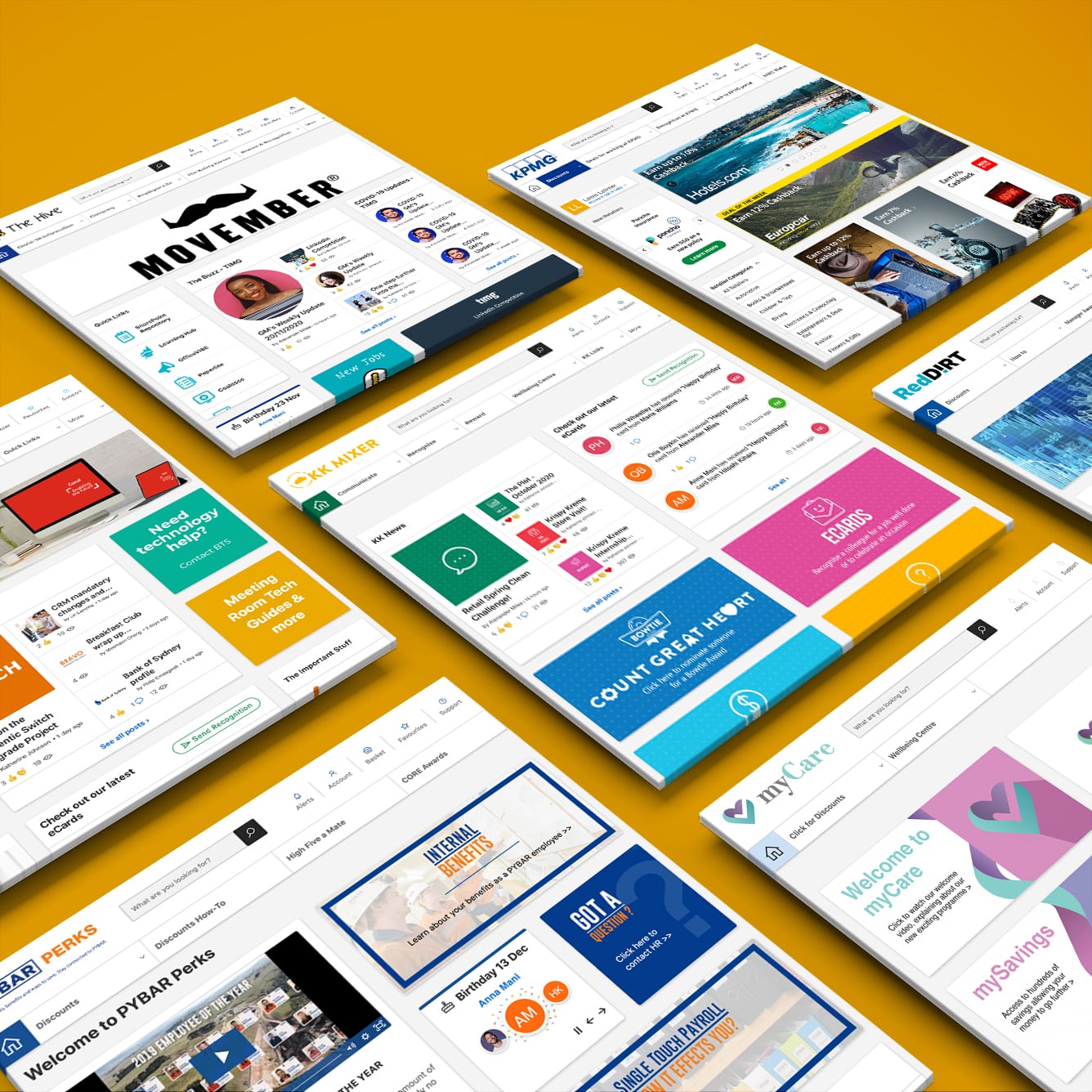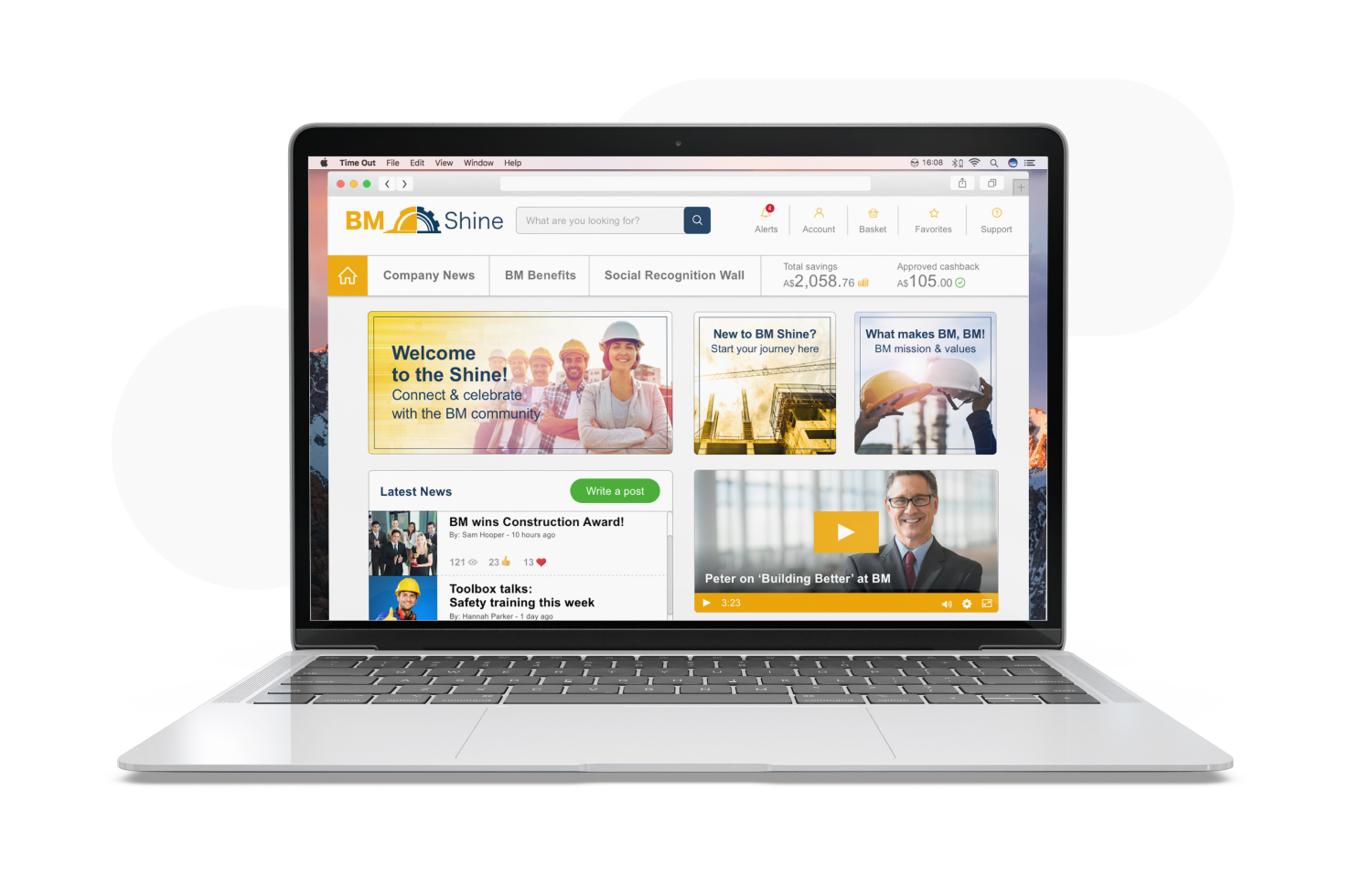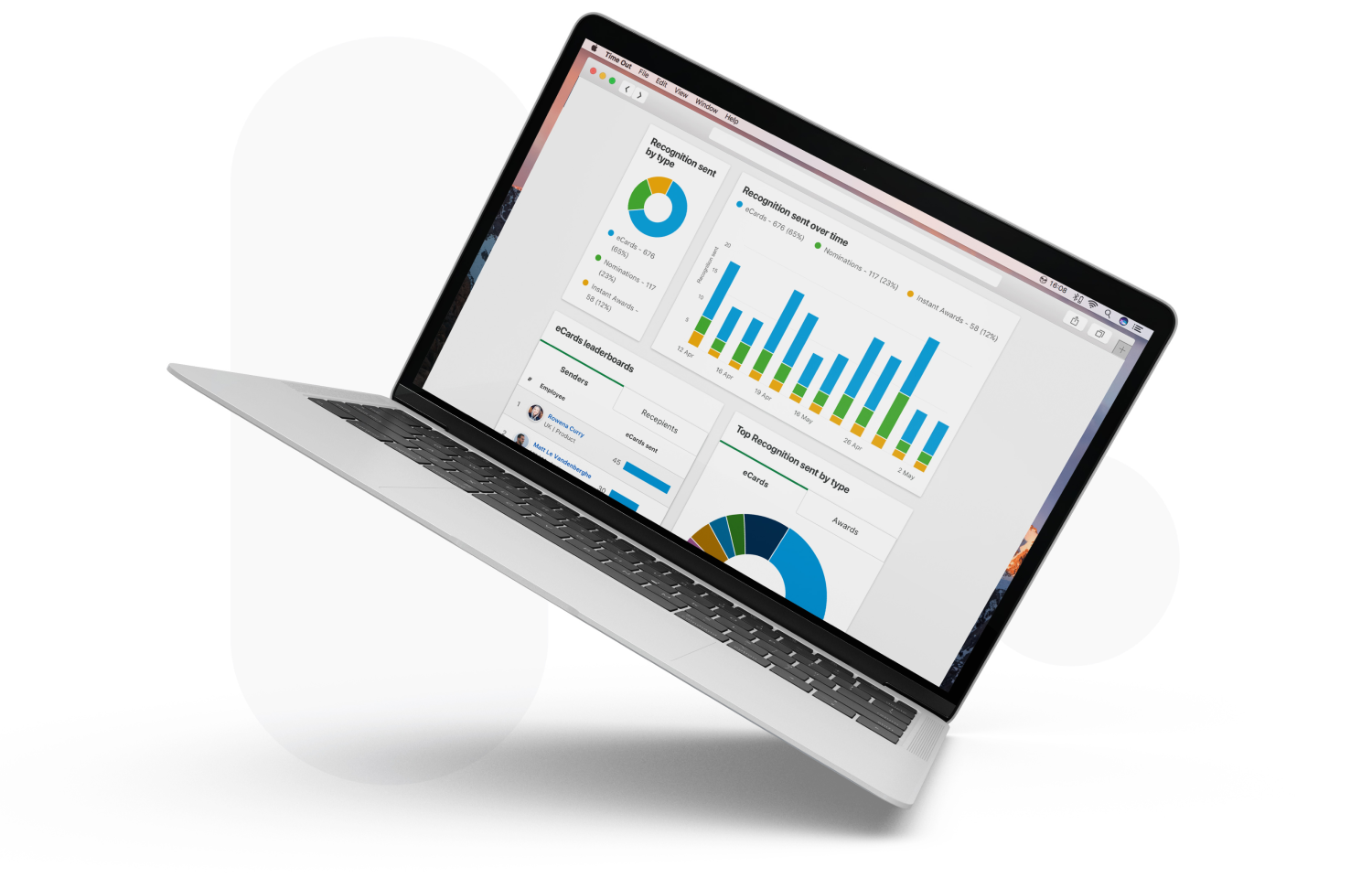Employee Engagement Platform
An employee engagement platform that supports your people every day
Reward Gateway | Edenred's all-in-one Employee Engagement Platform helps create a streamlined and centralised employee experience customised for each organisation. A flexible platform empowers HR to choose the right combination of engagement tools – from market-leading employee discounts and perks to reward and recognition, surveys, wellbeing and internal communications – in order to meet the changing needs of their people and their company.

Build an employee engagement platform designed for your business, and your people
Reward Gateway | Edenred is your partner in success and strategy. You’ll have a dedicated Client Success Manager, an Implementation team and a 24/7/365 employee support staff by your side to maximise your platform, which features:

100% tailored look and feel
Fully customise your platform to bring your culture and employer brand to life.

A centralised hub
Make it simple for employees to find what they need, exactly when they need it most.

Flexible layouts
Quickly modify and adapt your hub yourself – no IT required!
Make your employee engagement solution uniquely yours
Whether you’re starting out with just one or two initiatives or need a full suite of engagement tools to move the needle at your business, our platform can be customised to suit your individual needs with products, including:
Custom design helps your employer brand stand out
Out of our thousands of clients, no two platforms are the same and each employee experience is unique. Our team of experts will help you put a bespoke hub in place and design an engagement strategy that drives daily use by employees, wherever and however they work. Plus, deliver a truly personalised experience for your employees through segmentation and customisation options to reach every part of your business.


Prove platform ROI with effective data
Create an engagement strategy that delivers results with real-time information on how people are using your employee engagement platform. With powerful, in-the-moment employee engagement analytics you can see how, when, and where your employees are engaging with your hub. Deep tracking of activity and usage gives unrivalled analytics, across all products with demographic segmentation that matches your organisation.
Featured eBook
5 Secret Ingredients to Launch an Employee Engagement Platform
Ready to launch your own employee engagement platform? Find out what you need to know in this free resource.
![[eBook] 5 Secret Ingredients to Launch an Employee Engagement Platform](https://www.rewardgateway.com/hubfs/02-resource_images/CTA-images/us-5-secret-ingredients-to-launch-an-employee-engagement-platform.png)
"Having 'The Hive' has really made a difference – it has been quicker and easier for us to reach our teams, and we could communicate a lot of information without our people feeling overloaded with a lot of corporate emails. Pairing this with R&R, and seeing our people use the Wellbeing Centre means our goals to support our people, keep them informed, and share the love are all well on track."
Discover more Reward Gateway | Edenred client success stories
![[Client Testimonial] Freightways Australia](https://www.rewardgateway.com/hs-fs/hubfs/00-Product-Assets-New/AU/Testimonial-Mockups/freightways-mockup.png?width=2000&height=1526&name=freightways-mockup.png)